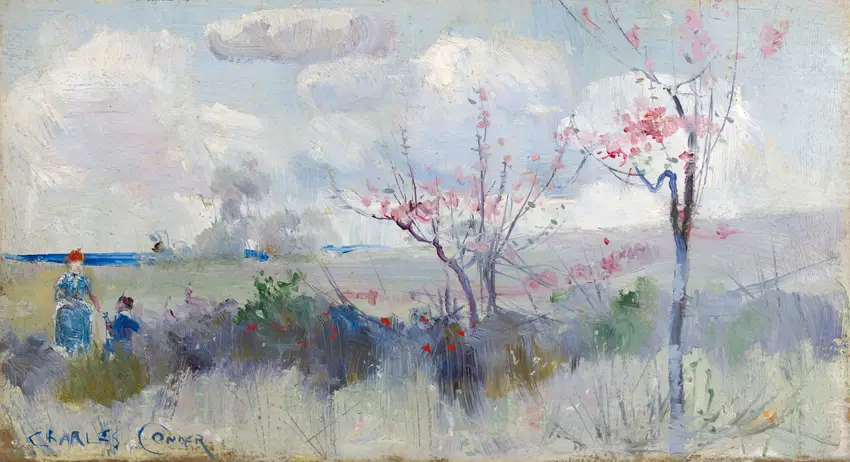Charles Conder
Charles Conder (1868–1909), English, A bohemian spirit of the late 19th century, this artist blended the languid elegance of fin-de-siècle Europe with the raw vitality of the Southern Hemisphere. Though born in England, his most evocative works emerged during his time in Australia, where he became a key figure in the Heidelberg School, capturing the antipodean light with a delicate, almost dreamlike touch. His paintings often exuded a wistful romanticism—figures lounging in sun-dappled gardens, theatrical scenes infused with a sense of fleeting pleasure. Fans of his work might recognize the influence of Whistler in his tonal harmonies or the decorative flair of Japanese prints, which he wove into compositions that felt both intimate and ephemeral.
Life for him was as fluid as his brushstrokes—split between continents, often short on funds but rich in creative alliances. He befriended writers like Oscar Wilde and artists such as Toulouse-Lautrec, absorbing the decadent energy of Paris while retaining a distinct, slightly melancholic charm. Though tuberculosis cut his life short, his legacy lingers in the way he bridged colonial audacity with Old World refinement, turning picnic blankets and ballerinas into quiet, poetic rebellions against the industrial age.
Life for him was as fluid as his brushstrokes—split between continents, often short on funds but rich in creative alliances. He befriended writers like Oscar Wilde and artists such as Toulouse-Lautrec, absorbing the decadent energy of Paris while retaining a distinct, slightly melancholic charm. Though tuberculosis cut his life short, his legacy lingers in the way he bridged colonial audacity with Old World refinement, turning picnic blankets and ballerinas into quiet, poetic rebellions against the industrial age.
-

Herrick’s Blossoms
Charles Conder (English, 1868–1909)A vibrant, dreamlike celebration of flowers in bloom, where color and light dance with poetic fragility.
